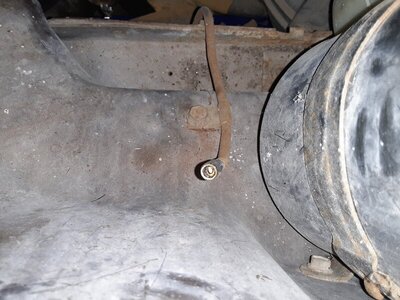Hello,
I just picked up a real nice 1974 Plymouth Satellite Sebring this weekend and I have a question for you guys concerning the fuel vent line running from the gas tank to the charcoal canister. I pulled and am replacing the fuel tank because it is full of rust. I can clean the actual 5/16" fuel line with no problem using forced air but when I blow air from the tank end of the vent line to the charcoal canister, there is blockage. The stoppage is what looks to be a "check valve" in the end of the steel line just prior to the rubber hose that connects it to the canister. When applying air at the tank, you can push down on the check valve and then air will travel through. To me, this is backwards. With the car running and the vacuum from the carb base plate pulling from the charcoal canister, shouldn't fumes and vapor from the tank be getting sucked into the carb to be reburned? Or is it designed so that once the car starts the vacuum in the canister pulls the check valve closed? This would then mean the tank would be vented through the gas cap while the car is running? It almost looks like a needle and seat in the vent line.

I just picked up a real nice 1974 Plymouth Satellite Sebring this weekend and I have a question for you guys concerning the fuel vent line running from the gas tank to the charcoal canister. I pulled and am replacing the fuel tank because it is full of rust. I can clean the actual 5/16" fuel line with no problem using forced air but when I blow air from the tank end of the vent line to the charcoal canister, there is blockage. The stoppage is what looks to be a "check valve" in the end of the steel line just prior to the rubber hose that connects it to the canister. When applying air at the tank, you can push down on the check valve and then air will travel through. To me, this is backwards. With the car running and the vacuum from the carb base plate pulling from the charcoal canister, shouldn't fumes and vapor from the tank be getting sucked into the carb to be reburned? Or is it designed so that once the car starts the vacuum in the canister pulls the check valve closed? This would then mean the tank would be vented through the gas cap while the car is running? It almost looks like a needle and seat in the vent line.

















